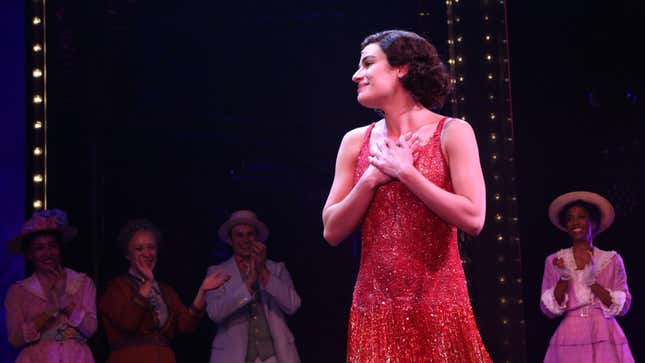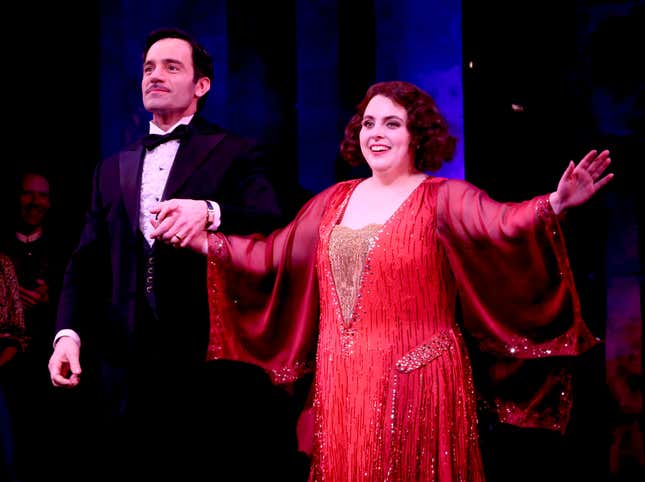Lea Michele’s Funny Girl Trades in Beanie Feldstein’s Matronly Garb for a Sexy Slip, and Fans Have Questions
The internet is speculating that Funny Girl’s shady lead swap might not just be a matter of talent, but of body size.
Entertainment

By now, you’ve probably seen the many spectacular reviews of Lea Michele’s rather controversial, but nevertheless six-standing-ovation-worthy debut as Fanny Brice, the lead of Broadway’s Funny Girl. Michele prematurely replaced Beanie Feldstein, who was supposed to play Fanny until early 2023 but supposedly quit after the production “decided to take the show in a different direction,” as Feldstein explained in her farewell Instagram post. And while we hope that the Glee super-villain can read all of the praise lauded at her, we’re not ready to let this show’s shady lead-swap go without some investigation just yet, and neither are its fans.
Reviews of Feldstein’s performance as Fanny were resoundingly lukewarm, with Jezebel’s own Kady Ruth Ashcraft weighing in to say that the nepotism baby was simply “OK” in the role, delivering a character that was “too funny—too goofy and without any sensuality.” But as the New York Post reports, fans are speculating that the reason for her early departure might actually, in part, simply be skin deep: Yesterday, TikTok user Alaina Noelle pointed out that Funny Girl’s casting change also came with a pretty noticeable costume change, which she believes is fatphobic.
-

-

-

-

-

-

-

-

-

-

-

-

-

-

-

-

-

-

-

-

-

-

-

-

-

-

-

-

-

-

-

-

-

-

-

-

-

-

-

-









































